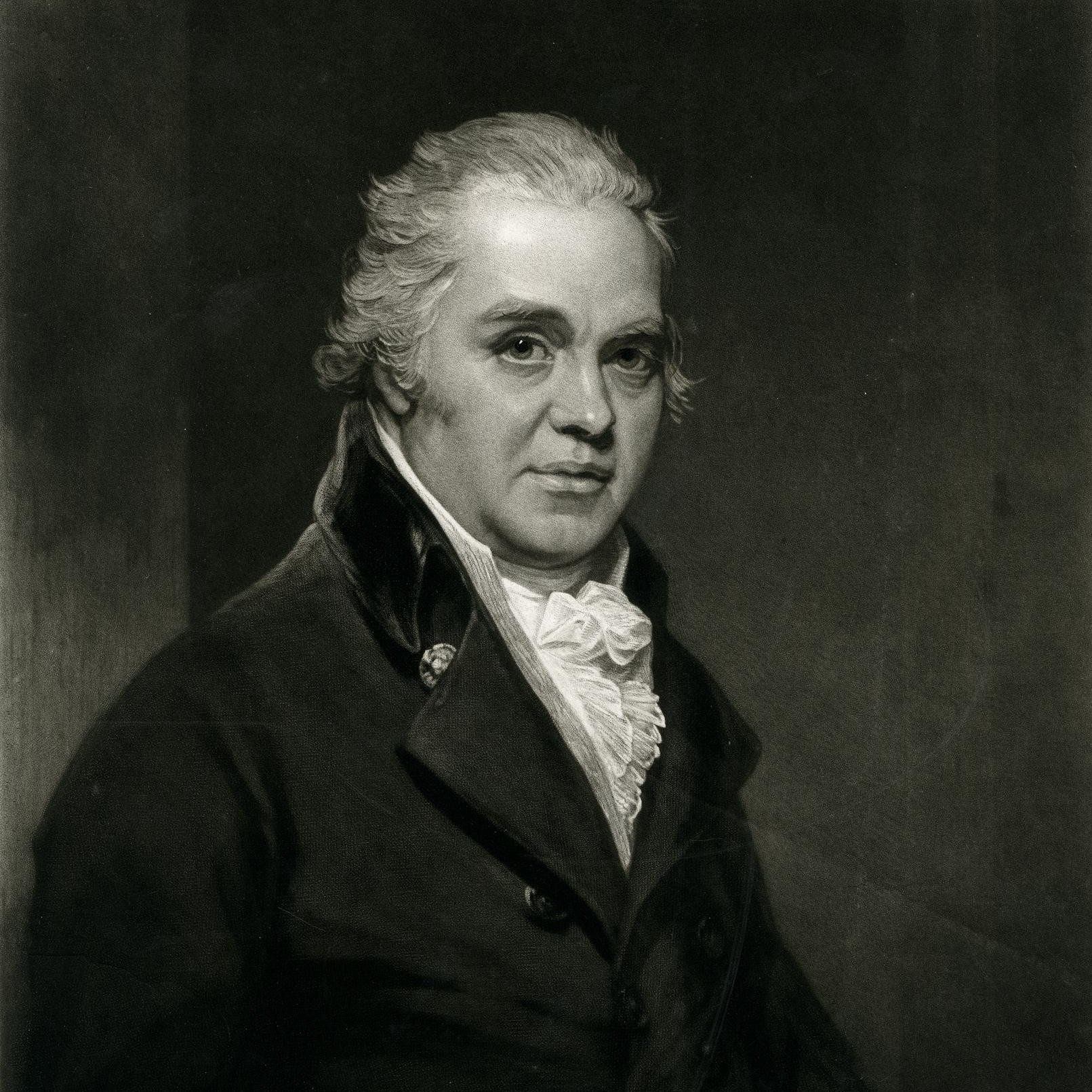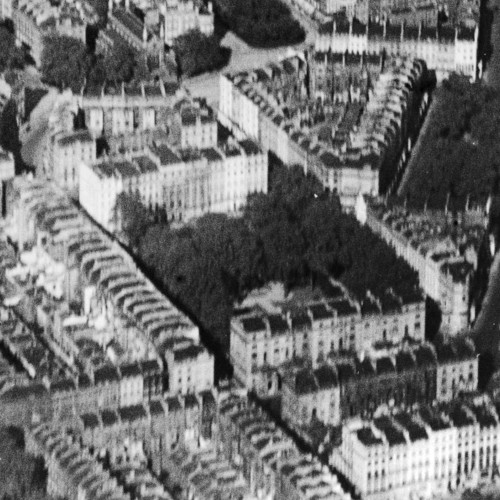It would have been all too easy to title this article “Affluence and Effluence”, for those are the two main topics of focus for Gordon Toplis when examining this peiod in his Tyburnia articles in Country Life Magazine, though we ultimately opted for less cryptic heading.
Affluence on a par with Mayfair and Belgravia
Gloucester Square was certainly an affluent neighbourhood throughout the latter half of the 19th Century. As our interactive map from the previous article showed, initial residents included numerous Knights of the British Empire, leading Engineers, two Senior Judges, and heirs to great Country Estates, many staying on the square for several decades. During this time the 48 houses remained in situ, albeit some altered through piecemeal extensions.
The comparative standing of the Square at the end of the 19th century is well illustrated by Charles Booth’s inquiry into the Life and Labour of People in London (1886-1903), and more specifically, the resulting poverty maps (1898-9):
From the maps we can see that Gloucester Square, and the areas between it and Hyde Park, were almost exclusively shaded goldish-yellow, indicating the highest tier of “Upper-middle and upper classes. Wealthy”. This shading was shared with Cubitt’s Belgravia Estate, most of Mayfair, and select parts of Marylebone, Knightsbridge and Kensington. Perhaps most notably, the maps show a close association between affluence and Garden Squares, with most of the yellow-shaded areas being assigned to Garden Squares or the houses next to Royal Parks. In contrast to modern day London, the areas closer to the North Bank of the Thames, including almost the entirety of Chelsea, were considered “Middle Class. Well-to-do.” and as such, a step down from neighbourhoods such as Gloucester Square.
This brings us neatly to the second topic of conversation.
The Problems with Effluence
It was well known that London suffered from a sanitation problem for most of the 19th Century, characterised by the Cholera Epidemics in 1831, 1848-49 & 1853-54, the Great Stink (1856), and Charles Dickins reference in Little Dorrit to the Thames as “a deadly sewer … in the place of a fine, fresh river”. Clearly these issues not only impacted the houses next to the Thames, though also the newly created prestigious Estates built next to or ontop of the tributary rivers that were carrying an increasing volume of effluence into the Thames.
When it came to house hunting in the mid 19th century: the further upstream, the better.
In the case of the Hyde Park Estate (Tyburnia) at the turn of the 19th Century, that stream was the Westbourne, which ran north-to-south just to the west of what is now Gloucester Terrace (…rather than its namesake, Westbourne Terrace), before joining the North-end of the Serpentine in Hyde Park. From there it flowed through Belgravia, under a bridge called Knights’ bridge (image below), before ultimately joining the Thames in Chelsea.
In 1808, a plan was submitted for comprehensive drainage of Tyburnia, that would flow into the Westbourne just before it entered the Serpentine. At the time such drainage routes were only intended to handle storm water – i.e. street draining – not household soil, though the latter was clearly on the horison. It seems the idea of diverting effluence into a Royal Lake was too much to stomach, and as a result the Westbourne was instead diverted through a tunnel subsequently referred to as the Hyde Park Sewer, that when completed in 1813, entered Hyde Park on the North Side, by Albion Street and re-joined the course on the South Side, by Knightsbridge. That course, to the south of Hyde Park, would see the Westbourne travel straight down Belgravia, about a block to the east of what would become Sloane Street, meander around the Chelsea Barracks, before entering the Thames under the Royal Hospital in Chelsea. The natural route of the Westbourne, that would soon be commonly known as the Ranelagh Sewer, is (roughly) illustrated by the below (simplistic) map from page 272 of the Transactions of the London and Middlesex Archaeological Society, vol VI (1882).
Allowing Domestic Soil into the Sewer Network
In 1815, the Westminster Commissioners for Sewers started to allow their network, built for stormwater, to be used for domestic soil – though it quickly proved incapable of the task. Prior to this, the accepted method of dealing with domestic soil was by means of a cesspit discreetly sited at the rear of the property, that would be emptied by “Nightmen” operating under private contract. However this convention was rapidly being challenged by the uptake of the water closet. In the early 19th Century, London had been undergoing a modernisation of its mains water system, that afforded houses such as those in Tyburnia with the water pressure to facilitate a water closet. This led to an increased uptake, and the expectation that new houses would be connected into the Sewage system, either directly or via an overflow from a cesspit. Indeed in Tyburnia, building agreements from as early as 1834 included a clause to “make a 12 inch barrel drain into the Sewer in said street, for the use of each of the said houses”, and by 1848 the Metropolitan Commissioners for Sewers insisted all new houses were connected to the sewage system. However this ultimately put a load on the brick-sewers that they were never intended to handle. Falls were often inadequate to carry waste away, and as a result the sewers quickly became elongated cesspools.
By 1851, this was causing real issues for Gloucester Square and the broader Tyburnia, as Henry Mayhew covered in his seminal works – London Labour and the London Poor:
“Throughout the new Paddington District, the neighbourhood of Hyde Park Gardens and the costly squares and streets adjacent, the sewers abound with the foulest deposit, of which the most disgusting effluvium arises.”
London Labour and the London Poor, London 1851, p.395
One man who appears to have had it worse was Thomas Cubbitt, the Master Builder responsible for large parts of Belgravia from the 1820s onwards. His estate was also poorly portrayed in Mayhew’s works, who noted:
In the Belgrave and districts there are many faulty places in the sewers which abound with noxious matter, in many instances stopping up the house drains and “smelling horribly.”
London Labour and the London Poor, London 1851, p.395
Not only did Cubitt have the same issue of his houses generating too much waste for the sewage system to handle, he was also downstream from of the waste being generated by Tyburnia, taking up much needed capacity in the Ranelagh Sewer (the Westbourne). Whilst Cubitt was known to lobby for the improvement of London’s sewer system, that did not stop him bemoaning the Tybrunia development:
“whose houses were discharging their waters upon my property”
Hermione Hobhouse, Thomas Cubitt, Master Builder, London 1971
Helping Dispell Zymotic Doctrine
One final, fascinating part of Mayhew’s insight into the wealthy neighbourhoods of Tyburnia and Belgravia, with their particular issues with “disgusting effluvium”, is how this very insight might have played a part in dispelling zymotic theory. It was a commonly held belief in the early to mid 19th century that diseases like Cholera were caused by a noxious form of bad air, or miasma. The Board of Health for England wholeheartedly supported this theory during the 19th century Cholera epidemics. Indeed whilst many know that Dr John Snow ultimately solved the 1854 Broad Street Cholera outbreak, by tracing infections to a water pump, from a well that had been contaminated by a nearby faulty cesspit. What most people don’t know, is that even when presented with Dr Snow’s evidence, the Board of Health still dismissed the findings and declared the outbreak had been caused by Miasma. It would take many more years for influential officials, including Sir John Simon, to be persuaded to abandon zymotic theory in favour of germ theory.
In media Dr Snow is often portrayed somewhat lone wolf, and a brilliant academic who had long doubted the zymotic theory. It is therefore of particular note, staggering even, that in 1851, three years before the Broad Street outbreak, Henry Mayhew, as a layperson, was already using his platform with The Morning Chronicle, to pour scorn on the idea that Miasma was causing Cholera, noting that despite having a particular issue with sewage smells, the neighbourhoods of Tyburnia and Belgravia had been little-impacted by Cholera.
“I may point out also that these very curious and authenticated accounts by no means bear out the zymotic doctrine of the Board of Health as to the cause of cholera; for where the zymotic influences from the sewers were the worst, in the patrician squares of what has been called Belgravia and Tyburnia, the cholera was the least destructive. This, however, is no reason whatever why the stench should not be stifled.”
London Labour and the London Poor, London 1851, p.395
Ultimately it wasn’t a persisting misguided belief in the zymotic theory that would convince Londoners to address their issues with the sewage system, but the smell itself. Matters were brought to a head when an unusually dry and hot summer in 1858 made the smell in London unbearable, an event worthy of its name – The Great Stink. The Historic England website has a good article on the remediation works undertaken, for anyone interested, though in short a massive engineering project was undertaken whereby over 1,000 miles of sewers were built, and most notably, large embankments constructed on the Thames to house, and disguise, the largest sewer tunnels tasked with collecting the waste from where it would have previously entered the river.
Setting the Scene for the Century to Follow
The sewer works would not only ultimately solve the issues being experienced by estates such as Belgravia and Tyburnia, they would also have a marked impact on neighbourhoods closer to the River and perhaps contributed to their gradual gentrification. The building of the embankment meant that many industrial properties lost their waterfront access, and with it, their purpose for being. Though it wasn’t until well into the 20th century that the neighbourhoods of Chelsea would be seen to rival and surpass Tyburnia.
As shown at the start of this article, Charles Booth’s maps show that at the end of the 19th Century Tyburnia was still one of the most affluent areas in London. Increasing transport connections, including the first Underground line, the Metropolitan Railway (1863) probably helped reinforce the prominence of the area.
The Westbourne Today
For the last 200 years the Westbourne has been channelled underground, becoming the Ranelagh Sewer, enclosed and out of sight of every day Londoners. However if you happen to stop by Sloan Street Tube Station on your travels, look out for the large-box-pipe above the platform – this is the Westbourne, and the key conduit for all of Belgravia and Tyburnia’s waste for much of the 19th century!



